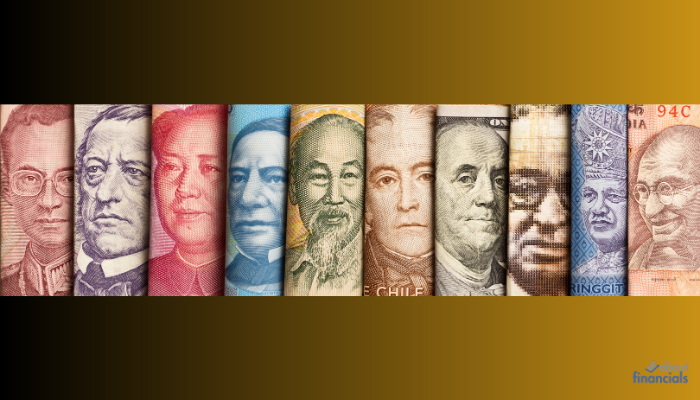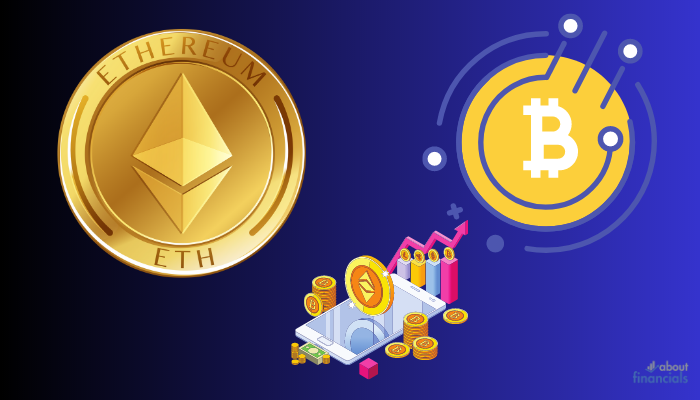Discussions surrounding potential changes in the international monetary order gain momentum, the concept of a new world currency has emerged as a topic of significant interest and speculation. This article aims to explore the question that’s on the minds of many: “When will the new world currency begin?”
The world’s financial structure has witnessed several paradigm shifts throughout history, from the Gold Standard to the establishment of the Bretton Woods system. In recent decades, the U.S. dollar has held the position of the world’s primary reserve currency.
However, the current global financial system faces challenges that have led experts and policymakers to consider alternatives that might foster greater stability and resilience.
World reserve currency history
Throughout history, major transitions in currency systems have often been triggered by geopolitical changes, economic forces, and the quest for stability in international trade and finance.

Overview of major historical currency shifts
In ancient civilizations, commodities like gold, silver, and other valuable goods were used as currency. However, it wasn’t until the establishment of the Gold Standard in the 19th century that a more structured and globally accepted monetary system began to take shape. Under the Gold Standard, currencies were directly pegged to a specific amount of gold, providing a sense of stability and predictability in international transactions.
U.S dollar as the world’s primary reserve currency
The aftermath of World War II saw the rise of the United States as a global economic superpower. The Bretton Woods Conference in 1944 resulted in the creation of a new international monetary system, with the U.S. dollar being pegged to gold and other major currencies pegged to the dollar. This system, known as the Bretton Woods system, solidified the dollar’s position as the world’s primary reserve currency.
BRICS Summit and Currency Discussion

The upcoming BRICS summit in August 2023, hosted by South Africa, will feature discussions about the possibility of a joint BRICS currency. As a scholar with a decade-long focus on the BRICS countries, the increasing momentum behind the idea of a BRICS currency reflects the changing global geopolitical landscape and the challenges to Western dominance.
1. Reasons behind interest in brics currency
The BRICS nations have sought to lessen their reliance on the U.S. dollar for years. Recent Western sanctions on Russia following its actions in Ukraine have accelerated this trend. Furthermore, concerns over rising U.S. interest rates and the U.S. debt-ceiling crisis have led to worries about the stability of the dollar.
2. Challenges to BRICS Currency
Although the prospect of a new BRICS currency is gaining attention, there are significant hurdles to overcome. Negotiating a single currency like the Euro within BRICS is complex due to economic disparities and political dynamics. Successful implementation would require consensus on exchange rates, payment systems, and a well-regulated financial market.
3. Role of Digital Currencies and De-dollarization
The rise of digital currencies and cryptocurrencies has introduced new dimensions to discussions. Countries like Russia, China, and Brazil are exploring non-dollar currencies for cross-border transactions. The appeal lies in reducing risks associated with the dollar’s dominance and increasing financial stability.
4. Expert Perspectives and Predictions
Economists and experts offer varying opinions on the potential of a BRICS currency. While some foresee a gradual transition, others see hurdles due to geopolitical realities and technological advancements. De-dollarization efforts may lead to a reshaped global financial landscape, but the exact path remains uncertain.
5. BRICS’ Evolving Role
The idea of a BRICS currency signals a broader commitment to reshaping international affairs. While the possibility of a new global economic order emerging solely from a BRICS currency is uncertain, the group’s ongoing coordination of policies and innovation could ultimately contribute to significant changes in the global financial system.
Current challenges in the global financial system
As we examine the potential need for a new world currency, it’s crucial to address the challenges and shortcomings of the existing global financial system. While the U.S. dollar’s dominance as the world’s primary reserve currency has provided a level of stability, it has also given rise to several concerns that have prompted discussions about alternative arrangements.
1. Dependence on a single reserve currency

One of the central challenges lies in the overreliance on a single dominant reserve currency—the U.S. dollar. This dependence exposes countries to risks associated with fluctuations in the dollar’s value and the potential impact on their own economies. It can also lead to vulnerabilities in global trade and finance, especially in times of economic uncertainty or geopolitical tensions.
2. Volatility and trade imbalances
The current system has also raised concerns about currency volatility and trade imbalances. Fluctuations in exchange rates can create uncertainty for businesses engaged in international trade, affecting pricing strategies, profit margins, and investment decisions. Moreover, trade imbalances between countries can disrupt economic stability and lead to tensions in international relations.
3. Economic vulnerabilities and financial crises
While the dollar’s dominance has contributed to global financial stability in some respects, it has also been associated with periods of economic vulnerability. Financial crises, such as the Asian Financial Crisis in the late 1990s and the global financial crisis of 2008, have revealed the potential risks of a system heavily reliant on a single currency. These crises underscore the need to consider alternative arrangements that could mitigate the impact of such events on the global economy.
4. Inequities and economic power dynamics

The concentration of economic power in a single country’s currency can also lead to inequities in international trade and finance. Countries with stronger currencies have a competitive advantage, while others may struggle to maintain their economic sovereignty. This dynamic can influence decision-making in global institutions and affect the distribution of benefits from international economic activities.
Reasons for Advocating a New Global Currency
Amid the challenges posed by the existing global financial system, calls for a new world currency have gained traction among economists, policymakers, and international organizations. The rationale behind advocating for such a significant shift stems from the desire to address the shortcomings of the current arrangement and create a more balanced and resilient international monetary system.
- Reducing Dependency on a Single Currency: One of the primary motivations behind the call for a new world currency is to reduce the world’s dependency on a single dominant currency, such as the U.S. dollar. By diversifying the reserve currency landscape, the risks associated with fluctuations in one currency’s value could be mitigated.
- Enhancing Stability and Predictability: Proponents argue that a new world currency could provide greater stability and predictability in global trade and finance. A more balanced distribution of reserve currencies might lead to smoother economic interactions and decreased vulnerability to economic shocks.
- Promoting International Cooperation: A new global currency could potentially foster a sense of international cooperation and shared responsibility in maintaining global economic stability. This could help mitigate competitive devaluations and currency wars.
- IMF’s Special Drawing Rights (SDRs): The International Monetary Fund (IMF) introduced Special Drawing Rights as an international reserve asset to supplement its member countries’ official reserves. SDRs are a potential stepping stone toward a new world currency, as they are comprised of a basket of major currencies and are intended to be a neutral and stable international asset.
- Exploration of Alternative Currencies: Various proposals have emerged suggesting the creation of alternative global currencies that could serve as anchors for the international monetary system. These proposals often involve a mix of established currencies or even the consideration of digital currencies.
Potential benefits of a new world currency
The potential introduction of a new world currency brings with it a range of anticipated benefits that proponents believe could reshape the global economic landscape and enhance international financial stability. While the challenges are substantial, proponents argue that the benefits could outweigh the complexities of implementing such a significant change.
- Currency Fluctuations Mitigation: Businesses engaged in cross-border transactions would face fewer uncertainties related to exchange rate movements, allowing for more accurate pricing and financial planning.
- Simplified Transactions: The need for currency conversions and associated fees could diminish, potentially leading to cost savings for businesses and individuals alike.
- Reduced Speculative Activities: A new world currency could deter speculative activities that exploit currency fluctuations for short-term gains. This could result in greater stability in financial markets and reduced volatility in exchange rates.
- Minimized Exchange Rate Manipulation: Countries sometimes manipulate their currencies to gain competitive advantages. A globally accepted currency could limit the scope for such practices, fostering a fairer and more level playing field in international trade.
- Greater Economic Coordination: A new world currency could encourage international monetary coordination among countries.
- Enhanced Crisis Response: In times of financial crises, a globally accepted currency could provide a common tool for managing liquidity and stabilizing economies.
Challenges and considerations
While the potential benefits are enticing, addressing these challenges is essential to ensure a successful and sustainable transition.
- Sovereignty Concerns: National sovereignty and autonomy over monetary policy are critical considerations that could pose hurdles to global consensus.
- Distribution of Power: Countries with strong economies and currencies may be hesitant to support a change that could dilute their influence.
- Status Quo Incentives: Countries with strong currencies, particularly the U.S. with its dominant dollar, might resist transitioning to a new global currency.
- Economic Interests: Strong currencies often come with economic benefits such as lower borrowing costs and higher purchasing power.
Technological implications and feasibility
- Technological Infrastructure: The introduction of a new global currency would require a robust technological infrastructure for issuance, distribution, and management. Developing and implementing such systems on a global scale could be challenging.
- Digitalization and Cybersecurity: As the world becomes more digitally connected, the risks associated with cyberattacks and data breaches increase.
- Different Economic Priorities: Countries have diverse economic priorities, and their readiness to embrace a new world currency could vary. Some nations may prioritize domestic growth, while others may emphasize stability and cooperation.
- Adjustment Challenges: Transitioning to a new world currency could necessitate significant adjustments in trade balances, foreign exchange reserves, and monetary policies.
The role of digital and Cryptocurrencies

The advancements in technology and the growing popularity of digital payment methods have prompted experts to consider the role of digital assets in reshaping the international monetary landscape.
Efficiency and Accessibility: Digital currencies offer the potential for faster and more efficient cross-border transactions, reducing the time and costs associated with traditional banking systems.
Inclusion and Financial Access: Digital currencies could improve financial inclusion, providing individuals in underserved regions with access to banking services and digital payment platforms.
Technological Infrastructure: Widespread adoption of digital currencies would require robust technological infrastructure to ensure security, scalability, and interoperability.
Regulatory Frameworks: Developing appropriate regulatory frameworks to govern digital currencies on a global scale is essential to prevent illicit activities and ensure consumer protection.
Privacy and Security Concerns: Balancing the benefits of transparency and security with concerns about data privacy and cyber threats is a significant consideration in the adoption of digital currencies.
Potential Impact on the Global Financial System
- Disruption of Traditional Banking: The widespread adoption of digital currencies could disrupt traditional banking systems, challenging established financial institutions.
- Decentralization and Autonomy: The decentralized nature of some cryptocurrencies raises questions about control and governance in the issuance and management of a new world currency.
Final thoughts
In conclusion, the concept of a new world currency stands at the intersection of historical precedent, economic challenges, technological advancements, and international cooperation.
The challenges posed by the existing system, including overreliance on a single currency, currency volatility, and economic vulnerabilities, have prompted discussions about potential alternatives. Calls for a new world currency reflect the desire to create a more stable, equitable, and resilient international monetary system.
As individuals, businesses, and governments navigate the complexities of the global economy, staying informed about these discussions is crucial. While the exact timeline and form of a new world currency remain uncertain, the exploration of these ideas underscores the need for ongoing dialogue, research, and cooperation.

